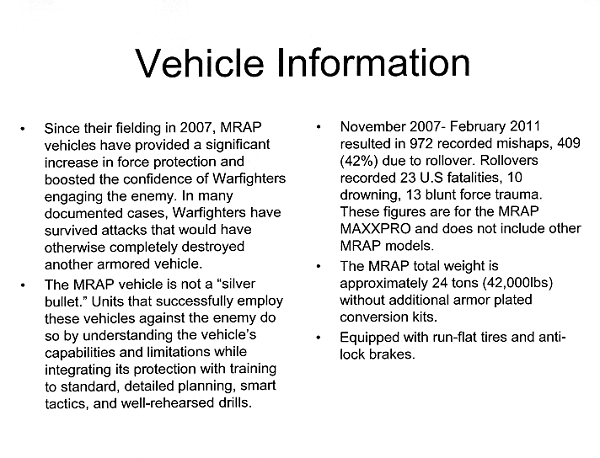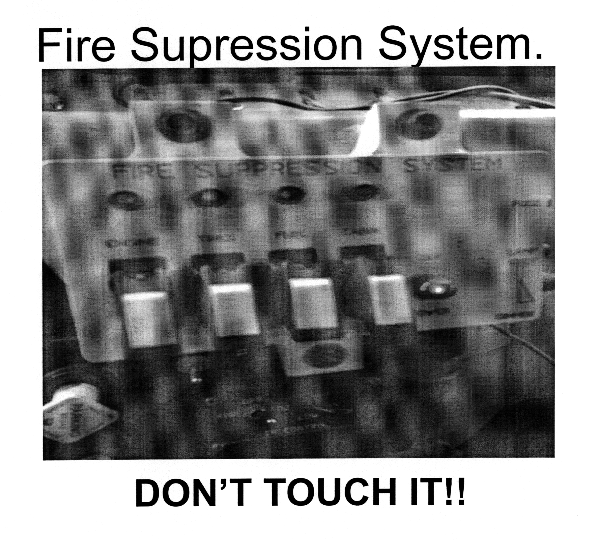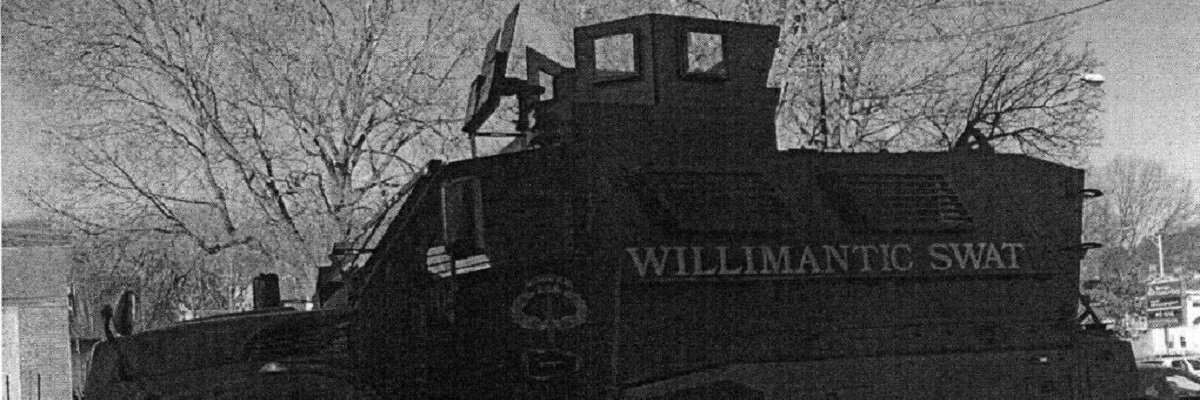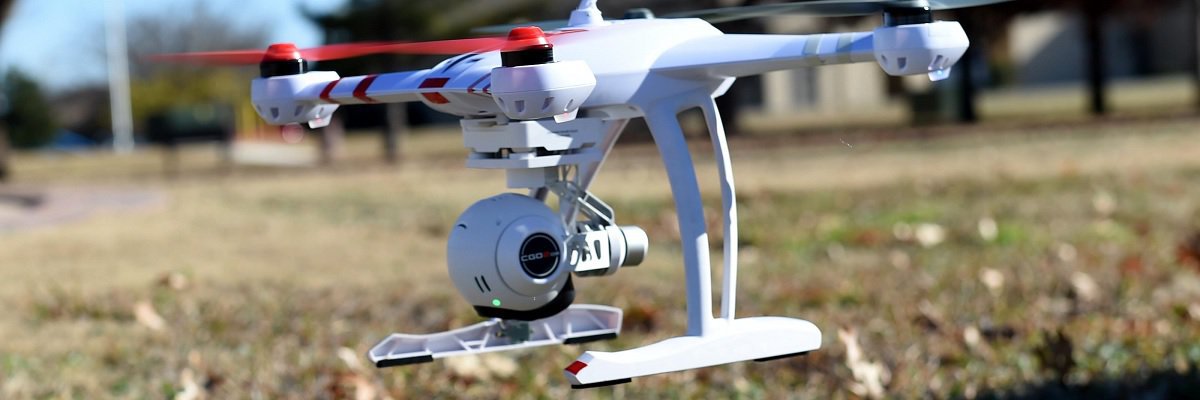The Willimantic, CT police department is one of the many police departments that acquired a mine-resistant MAXXPRO MRAP through the 1033 program. In response to a records request for any documents regarding the department’s use of the vehicle, the WPD provided their MRAP training Power Point presentation that was reportedly approved by the 1033 program in Battle Creek, Michigan.
The beginning of the presentation states vehicle information including that the 972 mishaps involving MRAPs in the United States between 2007 and 2011 resulted in 23 fatalities.

The Military tactical vehicle comes with number of helpful systems beneficial for those serving in a combat zone. The fire suppression system is designed to put out fires created by explosions or flames effecting the outside of the vehicle, as well as quell any fires that may erupt in the passenger or ammunitions compartments. While the presentation proclaims the air supply panel “very self explanatory” …

the directive beneath the fire suppression system reads “DON”T TOUCH IT!”

A lack of training in the use fire suppression system suggests that the Willimantic Police Department does not predict being the recipient of any molotov cocktails in the near future. Then how does the department justify the possession of the mine-resistant military vehicle?
According to Chief L. Maruzo Bolduc, the department conceives of the vehicle as a bullet-proof rescue vehicle to be used to evacuate threatened or wounded officers and civilians from an active crime scene.
It’s not just its armor that makes it valuable to the department. While the training claims that the MRAP is not the “Silver Bullet” for law enforcement, it’s “massive size and menacing appearance” make it useful, with the gunner turret on top only adding to the menace.

According to Michelle McCaskill, spokesperson for the Defense Logistics Agency which distributes the 1033 equipment, individual law enforcement agencies are required to present a “training plan” to a Department of Defense state coordinator.
“It has always been the responsibility of each state’s designated coordinator to ensure that each and every Law Enforcement Agency (LEA) is trained on the equipment they received from the 1033 program. LEAs are required to certify to DoD through the state coordinator they have a training plan for an asset that requires specialized training, to include armored vehicles and aircraft, before the equipment is issued. LESO receives a copy of the plan only – the approval process is at the state coordinator level.”
As police department arsenals across the nation becoming increasingly militarized through 1033 and other similar programs, it is important to ask if military-grade training is coming along with the military-grade equipment. One recurring refrain in reporting on the 1033 program is the question of overkill. If proper and complete training is not distributed with the hardware, than what purpose does it serve?
At the very least, we now know that as the Willimantic MRAP cruises down Main Street toward the local school’s “Touch A Truck Day” it serves the main purpose of being bulletproof - and intimidating criminals and civilians alike.
Read through the full manual on the request page, or embedded below:




